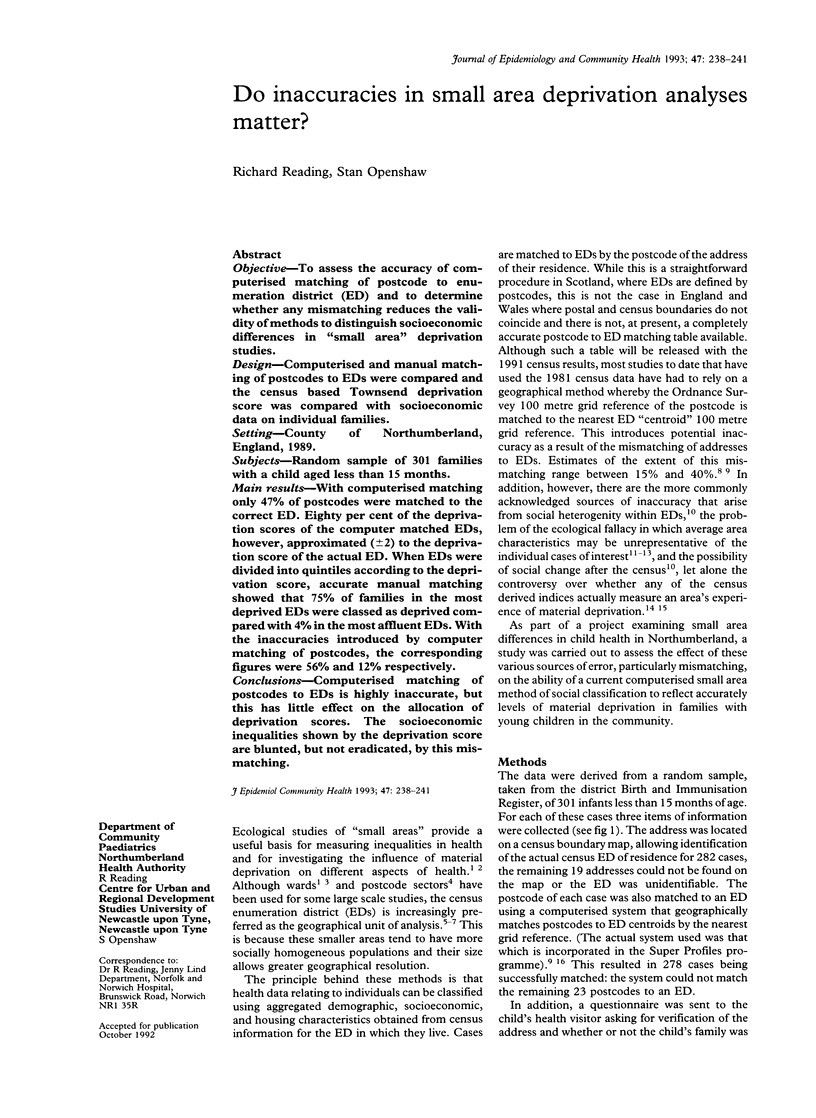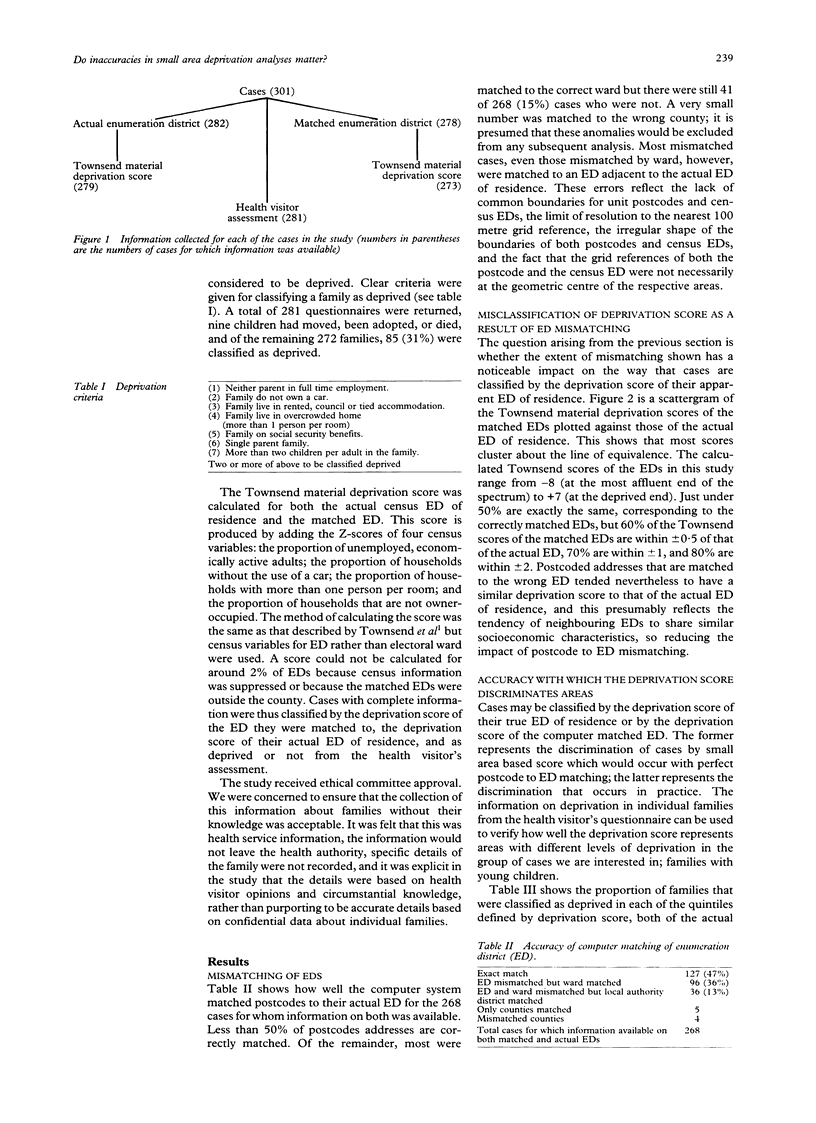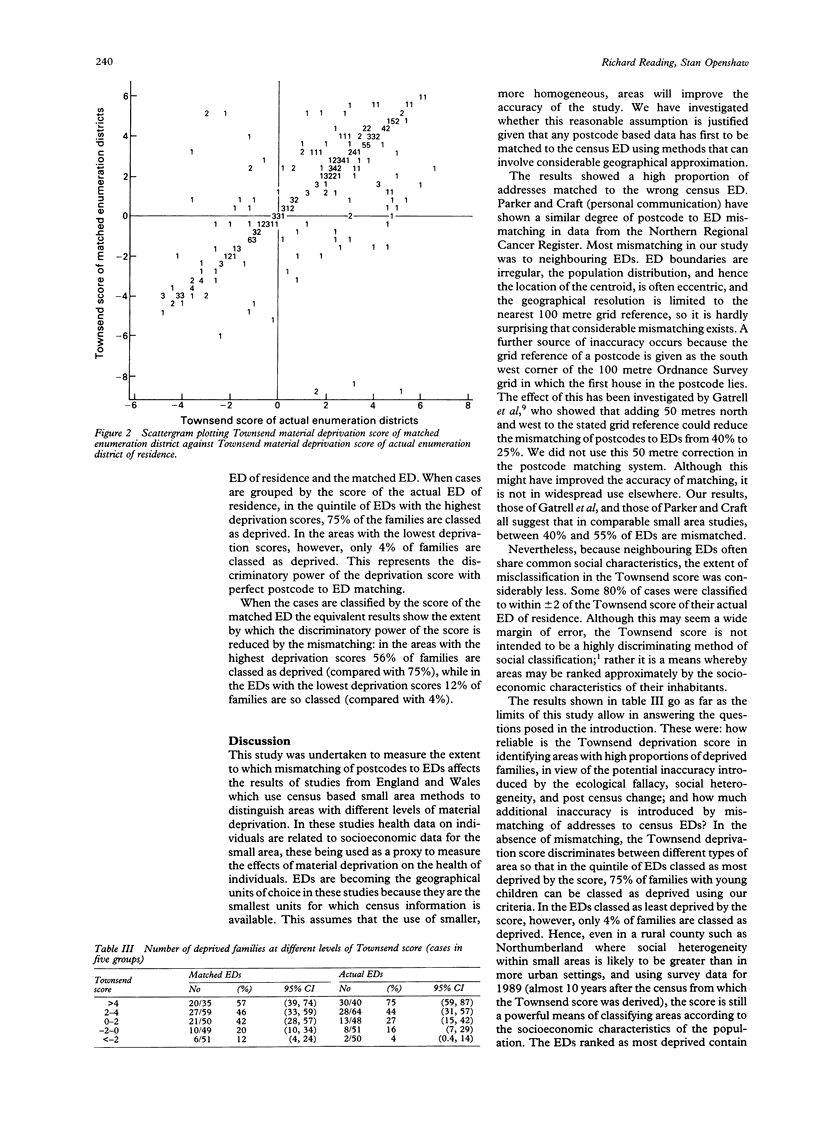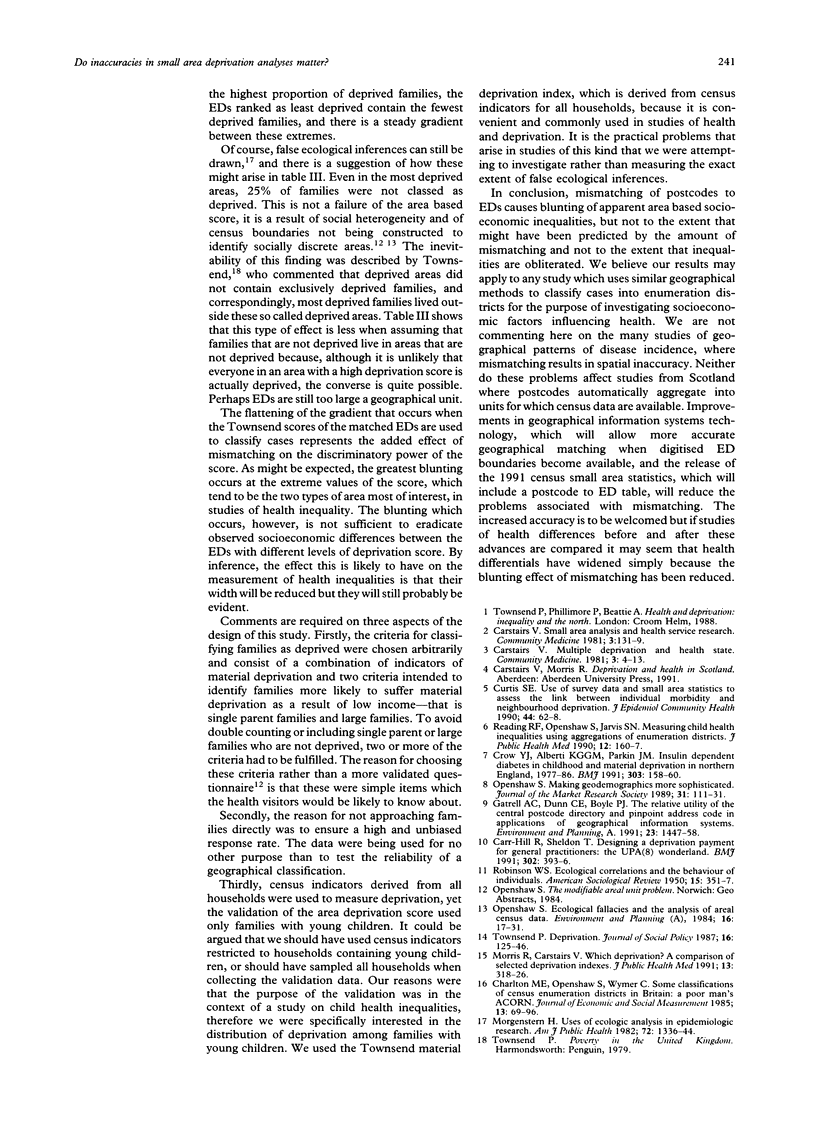Abstract
OBJECTIVE--To assess the accuracy of computerised matching of postcode to enumeration district (ED) and to determine whether any mismatching reduces the validity of methods to distinguish socioeconomic differences in "small area" deprivation studies. DESIGN--Computerised and manual matching of postcodes to EDs were compared and the census based Townsend deprivation score was compared with socioeconomic data on individual families. SETTING--County of Northumberland, England, 1989. SUBJECTS--Random sample of 301 families with a child aged less than 15 months. MAIN RESULTS--With computerised matching only 47% of postcodes were matched to the correct ED. Eighty per cent of the deprivation scores of the computer matched EDs, however, approximated (+/- 2) to the deprivation score of the actual ED. When EDs were divided into quintiles according to the deprivation score, accurate manual matching showed that 75% of families in the most deprived EDs were classed as deprived compared with 4% in the most affluent EDs. With the inaccuracies introduced by computer matching of postcodes, the corresponding figures were 56% and 12% respectively. CONCLUSIONS--Computerised matching of postcodes to EDs is highly inaccurate, but this has little effect on the allocation of deprivation scores. The socioeconomic inequalities shown by the deprivation score are blunted, but not eradicated, by this mismatching.
Full text
PDF



Selected References
These references are in PubMed. This may not be the complete list of references from this article.
- Carr-Hill R. A., Sheldon T. Designing a deprivation payment for general practitioners: the UPA(8) wonderland. BMJ. 1991 Feb 16;302(6773):393–396. doi: 10.1136/bmj.302.6773.393. [DOI] [PMC free article] [PubMed] [Google Scholar]
- Crow Y. J., Alberti K. G., Parkin J. M. Insulin dependent diabetes in childhood and material deprivation in northern England, 1977-86. BMJ. 1991 Jul 20;303(6795):158–160. doi: 10.1136/bmj.303.6795.158. [DOI] [PMC free article] [PubMed] [Google Scholar]
- Curtis S. E. Use of survey data and small area statistics to assess the link between individual morbidity and neighbourhood deprivation. J Epidemiol Community Health. 1990 Mar;44(1):62–68. doi: 10.1136/jech.44.1.62. [DOI] [PMC free article] [PubMed] [Google Scholar]
- Morris R., Carstairs V. Which deprivation? A comparison of selected deprivation indexes. J Public Health Med. 1991 Nov;13(4):318–326. [PubMed] [Google Scholar]
- Openshaw S. Ecological fallacies and the analysis of areal census data. Environ Plan A. 1984 Jan;16(1):17–31. doi: 10.1068/a160017. [DOI] [PubMed] [Google Scholar]
- Reading R. F., Openshaw S., Jarvis S. N. Measuring child health inequalities using aggregations of Enumeration Districts. J Public Health Med. 1990;12(3-4):160–167. doi: 10.1093/oxfordjournals.pubmed.a042541. [DOI] [PubMed] [Google Scholar]


